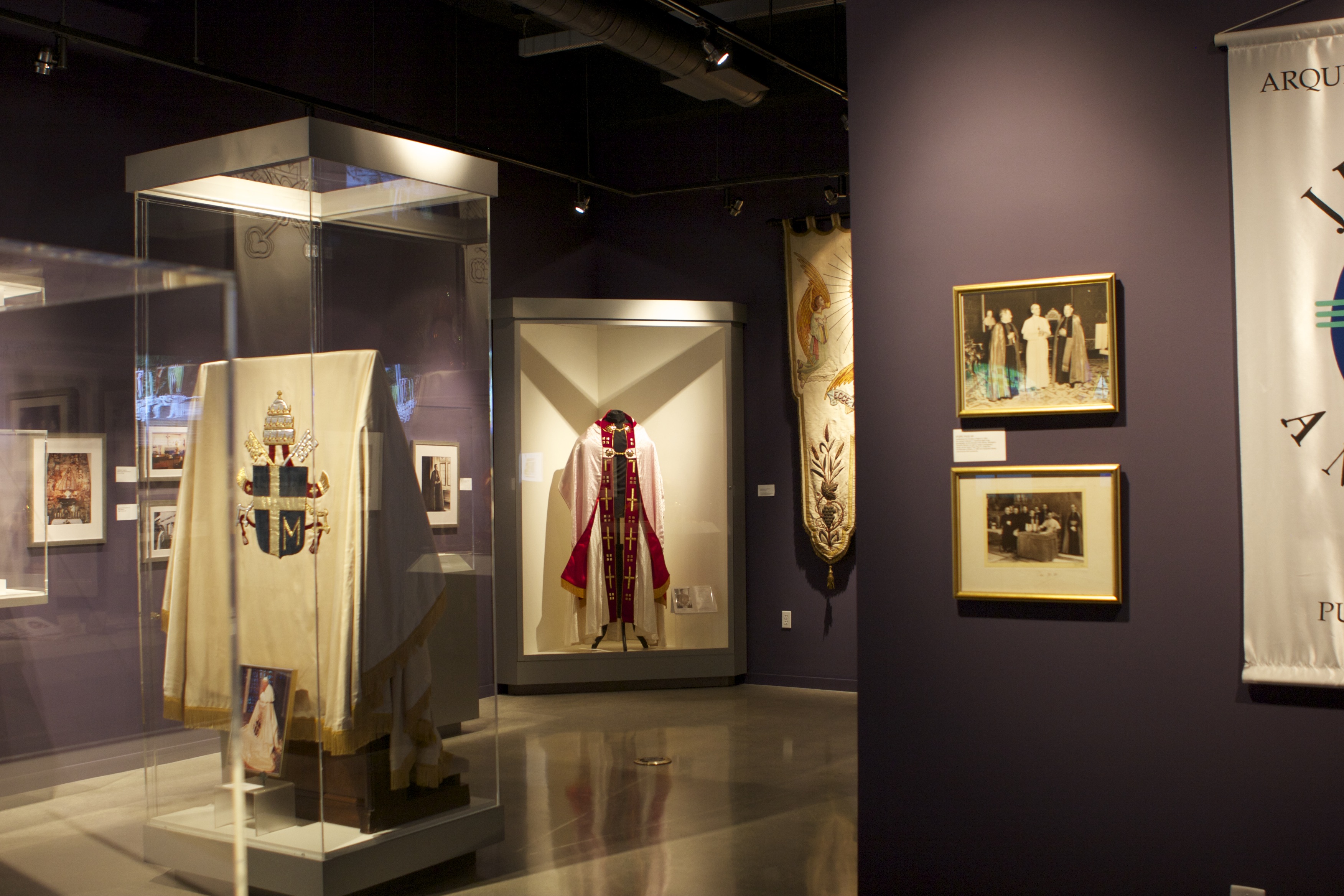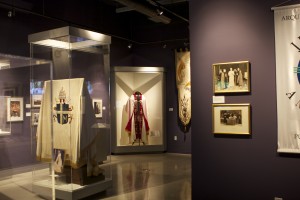What is the best way to protect artifacts in a case? This is a question we get asked a lot. The answer depends on a number of factors, but let’s keep things simple.
There are four major factors that will cause objects to degrade when they are in a case environment for long periods of time. They are ultraviolet radiation, air quality, humidity and temperature. They are listed in roughly descending order of importance. I say roughly because the order of importance in your installation will depend on what you are storing or displaying and the conditions in your facility.
Ultraviolet Light
When designing a case, you can choose either glass or acrylic. There are good arguments for using either material in a vitrine. I like the classic look of glass but also appreciate the versatility and clean look you can get from well made acrylic. In either case, you need to make sure that the one you choose offers U/V protection to the artifacts in your case.
With glass, you can either order it with U/V filtering in the glass or you can add a film to it during production. Glass with U/V filtering already in it may take longer to get and cost a little bit more, but it saves steps in the production process.
Acrylic is also a good choice, but you have to watch out for a few things when you buy it. First, almost all acrylic is manufactured with some type of U/V filtering. The problem is that most of the filtering is there to protect the acrylic itself from degradation and NOT the artifacts in your case.
There are acrylics that are designed to do both. Here is the tricky part. The manufacturing process is different for these two types. Regular acrylic with U/V filtering that does not protect your artifacts is made by extruding the material and the acrylic that will help protect your artifacts is made in a casting process. What that means is that the kind that you want is more expensive and tricky to work with. The surface does not have uniform thickness (we’re talking microns here) and it takes special skill to achieve clean welded seams.
Air Quality
While there are other factors, air quality is most affected by the materials used to construct the case. The use of materials that limit volatile organic compounds or VOCs is the most effective means of maintaining acceptable air quality inside the case.
VOCs like formaldehyde are frequently added to paints and glues to extend shelf life. The glues are then used to manufacture the plywood and other materials used in case construction. Those VOCs will eventually dissipate, but it can take months or years for that process to complete and during that time, the VOCs can become trapped and concentrated inside your case. This is bad for your artifacts.
Luckily, building materials with no added urea formaldehyde (NAUF) and paints with no VOCs are becoming much more common and easy to obtain.
Humidity and Temperature
The next two factors, humidity and temperature, are already controlled to some degree by the climate control system within your building. The actual temperature objects are stored at is less important than keeping the temperature relatively stable. It is important to avoid large and sudden temperature changes.
The case environment itself will provide a buffer by limiting air transfer between the inside of the case and the room. This will help keep the temperature in the case relatively stable and mitigate short term changes within the building. So if you have to open outside doors for an hour on a hot and humid day, the temperature and humidity inside the case will not change very much during that time.
Passive humidity control is a good option if you cannot maintain relatively low humidity inside your facility. These are simple and relatively inexpensive to build, but do require regular maintenance. They are generally just a discreet slot or drawer that has access to the air inside of your case. You place silica gel packs in the slot or drawer to absorb humidity from the inside of the case. Maintenance consists of monitoring the humidity inside the case and replacing the silica gel packs as necessary or on a regular schedule.
Active temperature and humidity control are generally not a good option unless you have an artifact like the Mona Lisa or the US Constitution. Active climate control systems are very expensive to build and they require lots of monitoring and maintenance. In addition, as you grow, it will become increasingly difficult to monitor and manage multiple micro climates. We usually recommend that you spend a fraction of the money to add a de-humidifier and humidity controlling thermostat to your existing cooling system.
It is important to us that your artifacts are protected while they help share your story. When you are ready to design cases that will both protect your artifacts and show them off to the world, let us work with you to find the best solution for you, your artifacts, and your guests.


